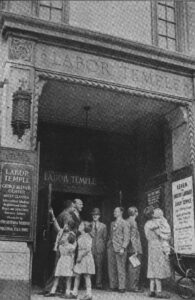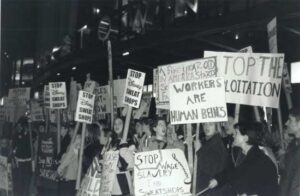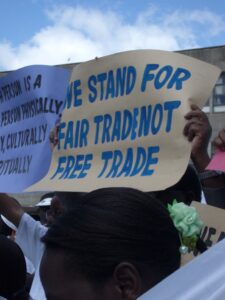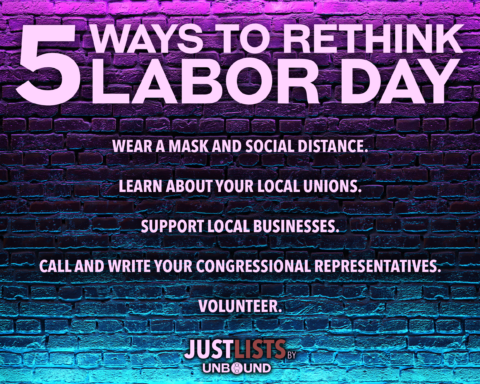1908

-
It is the beginning of the 20th century. The United States has seen rapid industrialization, urbanization, concentration of wealth, and labor rights issues.
-
In response, an ecumenical gathering adopts the 1908 Social Creed of the Churches.
1950s
-
Presbyterians advocate “free collective bargaining in labor-management relations,” calling on Presbyterians to join labor unions “as an expression of Christian vocation” (1952).
-
Acknowledging that the church has no special expertise in economic theory, the Presbyterian church declared however that “the Church does know something of the will of God as it concerns human nature and human relationships” (1959).

1960s
-
Presbyterians call upon “society’s ethical obligation to provide useful work for its members” (1964). All legal residents have a right to employment.
1970s
-
The Presbyterian church endorses minimum wage laws (1971).
-
Uplifts “the biblical doctrine of the dignity, beauty and worth of human work and creativity, even in its most mundane form, recognizing that meaningful labor is every person’s honor and duty as response to God’s grace” (1971).
-
Calls for the dismantling of all economic barriers of race, religion, sex, and age (1971).
-
Urges training and care programs for those who have lost jobs (1971).
-
Identifies the following priorities: “elimination of poverty, adequate national health care, decent housing, expansion of mass transit, and the conservation of resources” (1976).
1980s
-
The General Assembly urges congregations to facilitate “the formation of projects to create work in their communities” (1980).
-
The church confronts the fact that it is “disproportionately represented in its membership by managers and professionals,” and therefore will need to be deliberate about operating from the perspective of labor, the underpaid, the unemployed, and the less educated (1980).
-
Promotes occupational safety and health regulations, particularly in jobs that involve mining and toxic substances (1982).
1990s
-
The General Assembly commits the church to modeling ethical and responsible employment practices, including “meaningful opportunities for participation in decision making” for all employees (1995).
-
“All workers – including the undocumented, migrant, and farm workers – have the right to choose to organize for the purposes of collective bargaining” (1995).
-
“Economic policies should be judged in light of their effect on the most vulnerable groups of people” (1995).

21st Century
-
Presbyterians adopt the 2008 ecumenical Social Creed for the 21st Century.
-
The creed calls for the “abolition of forced labor, human trafficking, and the exploitation of children…”
-
For “employment for all, at a family-sustaining living wage, with equal pay for comparable work…”
-
For effective social security…
-
For “tax and budget policies that reduce disparities between rich and poor…”
-
For “just immigration policies that protect family unity… and foster international cooperation…”
-
And for sustainable communities (2008).






Unbound Social